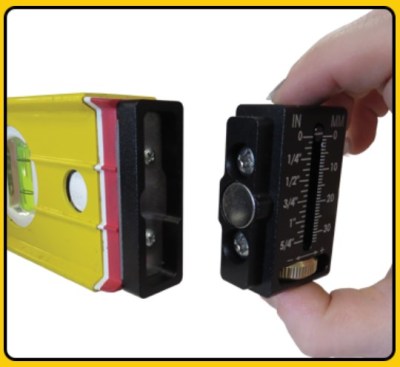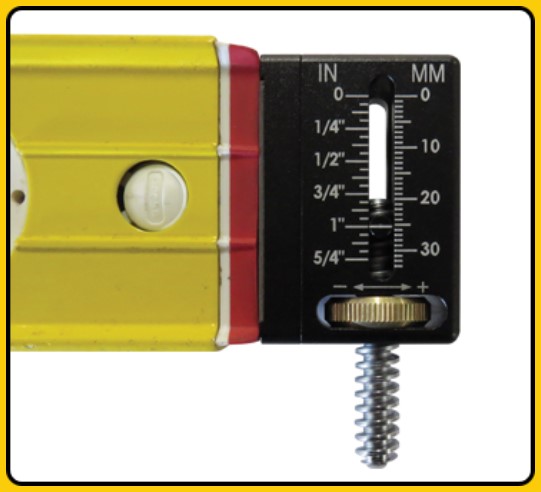The How Far Out Gauge by FastCap is like an analog app for your levels. It’s a well-made, well-designed, and useful accessory for leveling applications in construction work. Workers in all building trades learn early on many ways to read a level to figure out how far out of level and plumb things are; these ways provide measurements that range from “close enough” to “very accurate,” depending mostly on the work being done, available time, and how important the measurement is. I find the How Far Out Gauge a game-changer for consistently getting this fundamental measurement quickly, reliably, and accurately. The gauge is easily attached to virtually any level type (at least 2 3/8 inches tall) and length, and it is interchangeable between levels (with extra connectors available separately), allowing it to adapt easily to a wide range of leveling tasks.
Designed by a career tradesman, the How Far Out Gauge shows hands-on sensibility from the real world of construction in its simple, practical features. Made with high-quality brass, stainless steel, and CNC-machined aluminum, the tool can withstand today’s demanding, rugged, fast-paced jobsites with dependable accuracy. Keyed lugs in the male/female connector insure the gauge is always installed the right way. A strong magnet in the connector holds the gauge to the end of my favorite level where a quick spin of a knurled brass knob on the finely machined adjustment screw while eyeballing the levels’ bubble is all it takes to make it spot-on in seconds. With the level set true, the How Far Out Gauge provides an instant, accurate reading in 1/16-inch or 1mm format. The increments are laser-etched into the tool and are easily read and held for adjustment and shimming purposes.

FastCap
The How Far Level Gauge attaches via a mounting adapter that comes with the unit. You can also buy extra mounting adapters ($12) for various levels. The gauge itself mounts to the adapter via a magnet, allowing you to quickly interchange it with other levels equipped with the mounting adapter.
Since everyone who uses a level already has a method for taking readings, the How Far Out Gauge might seem redundant at first glance, but savvy workers will soon see plenty of applications where it will speed up and improve their workflow. Having a level set up to measure how far conditions are out of level or plumb adds speed and precision to everything from hanging doors and setting cabinets to building stairs and truing existing framing. I’ve modified my workflow to include the How Far Out Gauge for all manner of tasks because it takes the guesswork out of measuring and streamlines the job of determining level and plumb. With an exact dimension, I can quickly make adjustments, alterations, or shims to create the excellent finish product my clients expect.
At around $50, this tool will quickly pay for itself in time saved producing accurate work quickly and efficiently.
